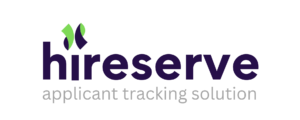HR and recruitment teams have increasingly turned to data-driven approaches to streamline their processes and make more informed decisions. Data driven recruitment uses technology, techniques, and data to analyse a large talent pool and identify candidates with the right skills, experience, and mindset to help your organisation achieve its goals. There is a wealth of information available ATS, interviews and assessments, however the misuse or misinterpretation of hiring data can be detrimental on your hiring processes.
This article explores the common mistakes in utilising hiring data and offers some solutions into how you can course-correct for better outcomes.
- Not balancing quantitative metrics with quality
There is a reliance on quantitative metrics such as time-to-fill and cost-per-hire in recruiting. While these offer valuable insights into your hiring process it is important to not let them overshadow the qualitative aspects of hiring. Your qualitative metrics can include how satisfied, engaged, and loyal your employees are. While they are harder to measure compared to quantitative metrics, they can help you better understand the needs, preferences, and motivations of your candidates.
By only using the quantitative data it may lead to you overlooking factors such as candidate experience, cultural fit, and the long-term satisfaction of employees.
- Not prioritising diversity and inclusion metrics
Diversity and inclusion should be important to all employers, as it contributes to innovation and helps to enrich workplace dynamics. Unfortunately, some HR and recruitment teams may overlook or undervalue these crucial metrics.
Analysing diversity data can help you understand if action is needed. By better understanding if some groups are not promoted at the same rate as other groups. However, this data then needs to be further explored by answering why it is happening, why it matters and what you are going to do about it in the future.
By actively tracking and analysing diversity metrics you can help ensure fair and inclusive hiring practices and foster a workplace that embraces diverse perspectives.
Find out more about CV Anonymisation
- Not embracing predictive analytics
The use of predictive analytics to forecast future hiring needs is a strategy that not all organisations fully exploit. Predictive analytics leverages your historical recruitment data to help forecast future talent needs, candidate success and hiring outcomes.
- Candidate success prediction: using analytics to analyse past data and identifying the characteristics of a successful candidate. This includes factors such as skills, education or personality traits.
- Turnover reduction: Analytics can also be used to understand why an employee may leave. By looking at data points such as work schedules or employee feedback you can identify patterns that lead to a high turnover. This information can then be used to make changes in the recruitment strategies to help retain talent for longer.
Read more about: Employee Turnover
- Performance Forecasting: Analysing data from previous work and employee performance reviews, you can identify the traits and skills that correlate with high performance in certain roles.
By harnessing the data to anticipate talent trends, organisations can address skill gaps strategically and plan for future hires, contributing to a more resilient workforce.
- Not incorporating employee feedback
Employee feedback is a valuable source of data that is often underutilised. Your existing employees can provide insights into the effectiveness or recruitment strategies, onboarding processes, and overall organisational culture. By integrating employee feedback into hiring data analysis, HR teams can refine their approach and create a workplace that resonates positively with the workforce.
Identify the key drivers of employee engagement in your organisation and see how you compare to other companies using a relevant benchmark. By understanding what drives engagement at your company will help you make the best future hiring decisions by attracting the best talent.
- Candidate Survey: By collecting candidate feedback can help you understand their experience during recruitment and how they feel about the organisation now. This data can then be used during the recruiting process to show potential hires how you value their feedback.
- Onboarding Survey: Creating a good onboarding experience for employees is important
- Exit Survey: Find out why employees are leaving and their experience at your organisation.
These surveys can help you better understand how candidates perceive your recruitment process, allow you to identify any gaps and better learn the overall experience of your employees through their time at your organisation.
- Blindly Trusting AI
While algorithms and automated screening tools have their place, they should complement, not replace the human touch in the hiring process. Its important to remember that your Recruitment AI will only be as good as the data you have, and if that data is the product of conscious or unconscious bias, the AI will then make biased decisions. This is due to algorithms replicating institutional and historical bias which can lead to gender or racial discrimination. When they look at past successful candidate the data pulled may showcase a historical bias that requires human intervention to overcome.
This can be seen through Amazon’s AI tool which showed bias against women, with the algorithm teaching itself that male candidates were preferable and penalising CVs that used the word women. Organisations should use AI as a supportive tool using it for repetitive tasks such as initial resume screening and scheduling interviews. While AI can be used to help create a more diverse workforce by analysing data and revealing potential biases, its still requires a human touch to make sure that this tool is properly promoting diversity.
You may be interested in reading our article: Does an ATS take the human element out of recruiting.
Navigating the hiring data landscape is vital for organisations seeking to build a robust and diverse workforce. By balancing quantitative and qualitive metrics, emphasising diversity and inclusion, using predictive analytics, incorporating employee feedback, and making sure to preserve the human element, you can use your hiring data to its full potential and create a more resilient and dynamic workforce.


